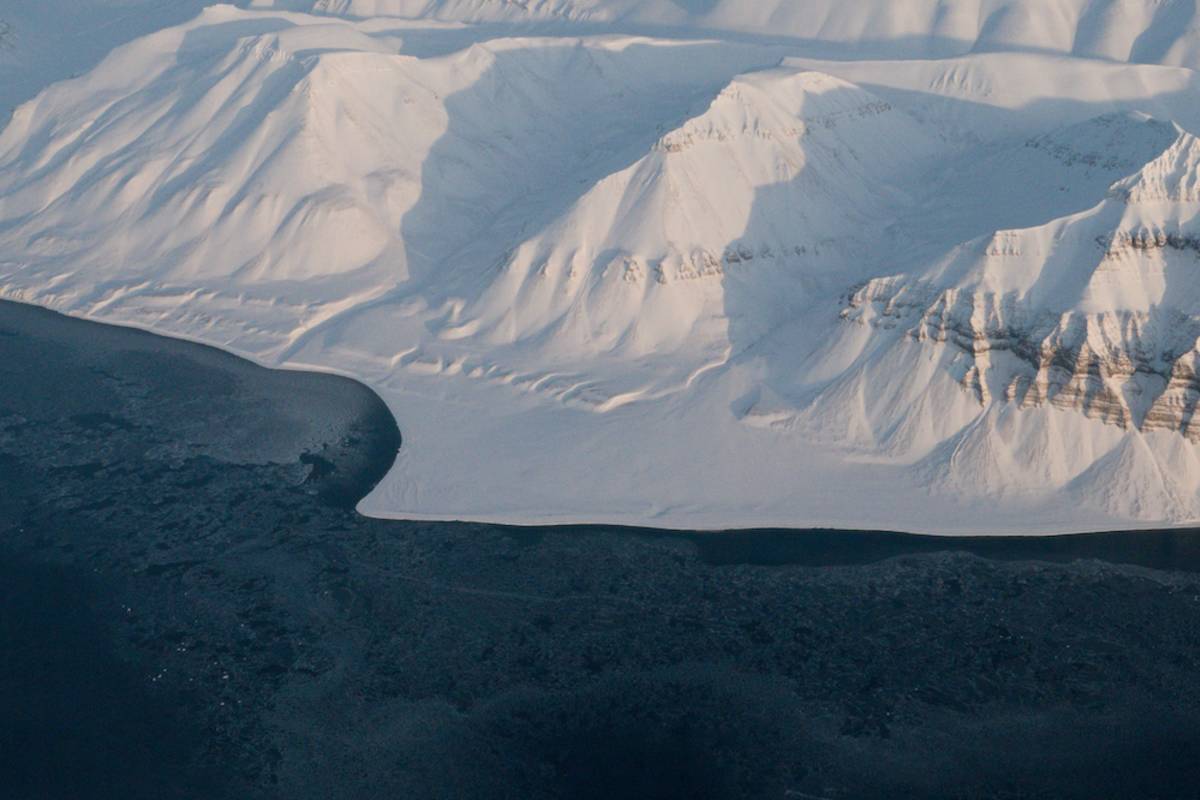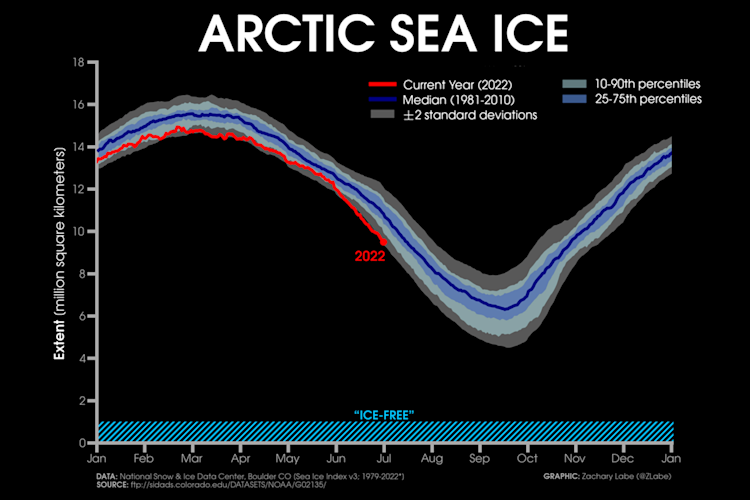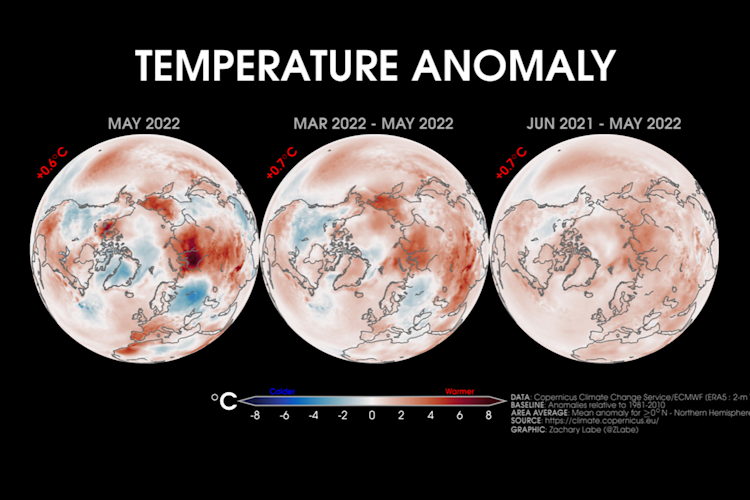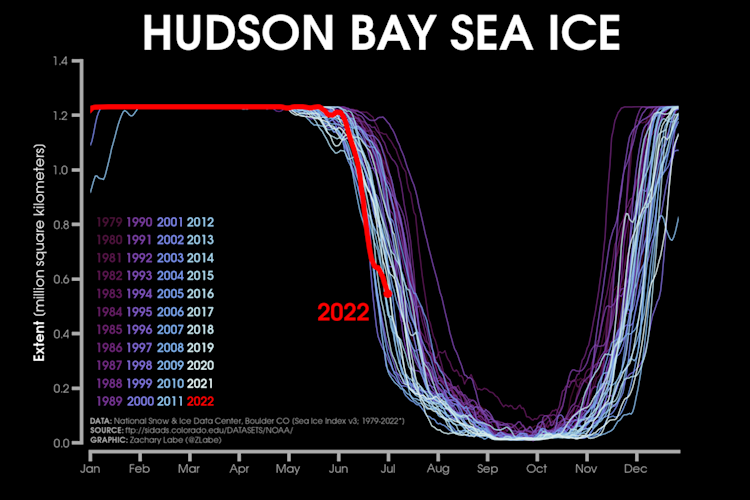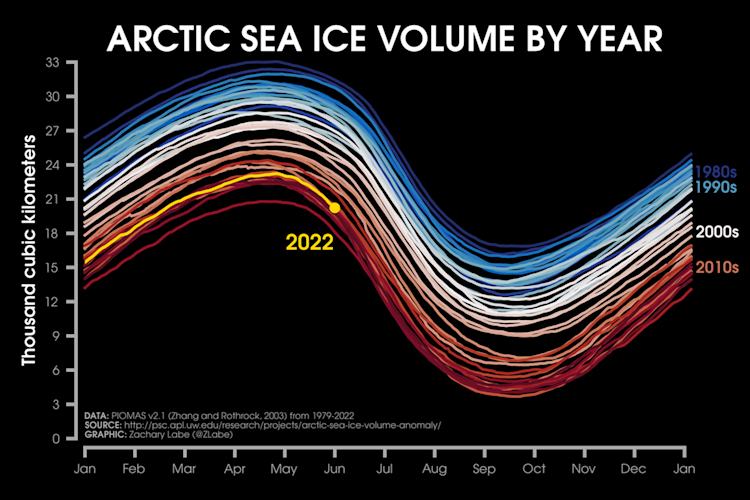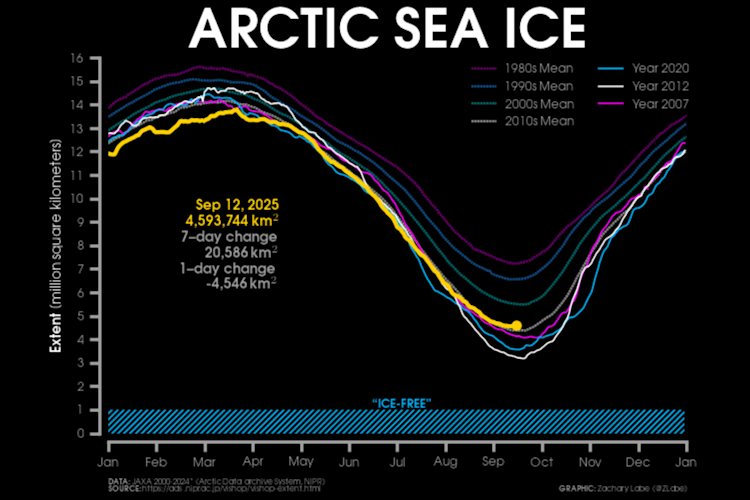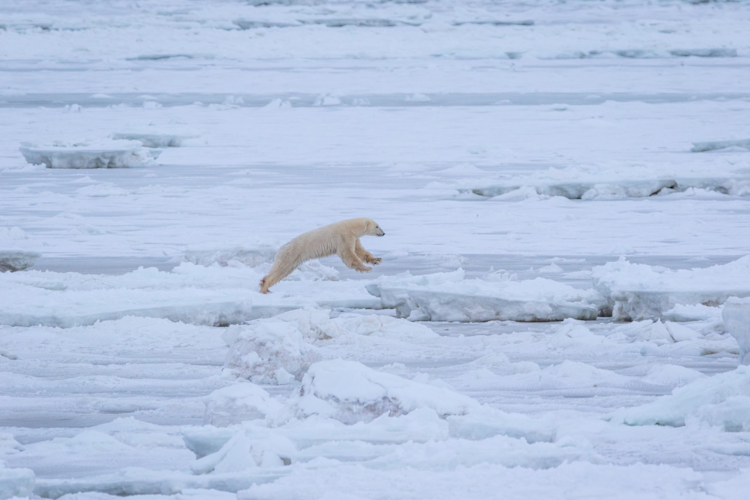The amount of Arctic sea ice naturally varies throughout the year in a shape resembling a seasonal cycle (Figure 1). In other words, the maximum extent of Arctic sea ice is usually reached sometime in March, and the annual minimum extent is usually set in September. However, due to human-caused climate change, we are witnessing large changes in this natural cycle of Arctic sea ice growth and melt. In fact, the thickness of Arctic sea ice in some regions has thinned by nearly 2 meters (or 66%) since the middle of the 20th century. Meanwhile, the extent of Arctic sea ice during September is declining at a rate of 13% per decade—or approximately shrinking by the size of the state of South Carolina! While long-term declines in Arctic sea ice are now found in every month of the year, the largest drops have been during the late summer months.
Therefore, monitoring the annual summer melt of Arctic sea ice is particularly important for evaluating these long-term trends. As expected, 2022 is no exception to the recent string of low sea ice years. As figure 1 shows, every day this year (red line) has witnessed sea ice below the long-term average (blue line). As of early July, Arctic sea ice levels are nearly two standard deviations below average this summer. This has significant consequences for the entire environment of the Arctic, including changes to the regional habitats for polar bear populations.
